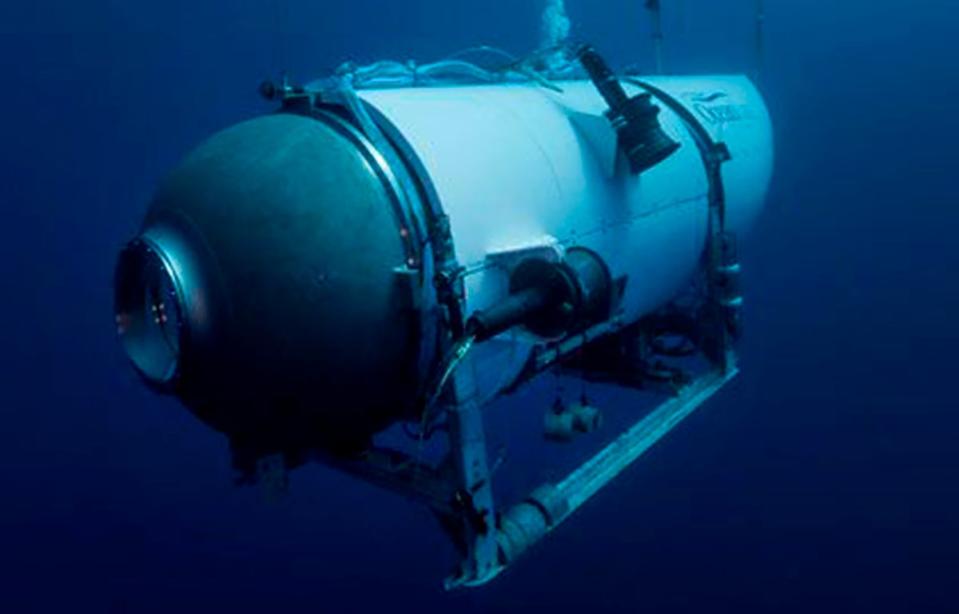“What could go wrong?” asked the CEO of the company that launched the ill-fated Titan submersible expedition to the wreck of the Titanic. he joked. Just a few weeks before the disaster, a new documentary emerged.
OceanGate CEO Stockton Rush made the chilling remarks in an interview with Canada’s St John’s Radio just weeks before one of its submarines exploded in the ocean in June 2023.
In addition to Rush, French diver Paul-Henri Nargeolet, British billionaire Hamish Harding, Pakistani businessman Shahzada Dawood and his teenage son Suleman Dawood also died in the accident.
His dire comment is featured in a new Channel 5 documentary about the disaster. During the interview, he was also heard saying that he chose to make the expedition in June because that was when the waters around the wreck of the Titanic were “calmest”.
“So with the Polar Prince [the vessel that carried the submarine out to sea]”We thought about this ice capability, let’s move the mission a little earlier this year,” he said. “We designed the underwater vehicle specifically for this mission.”

These were not the only disturbing remarks Mr. Rush made before his death.
In a 2021 interview that resurfaced after the disaster, OceanGate CEO was also noted to have boasted about “bending the rules” when building the Titanic tourist submarine.
“I broke some rules to do this. Carbon fiber and titanium… there’s a rule that you don’t do that. Well, I did,” he said.
Meanwhile in an episode of BBC Travel Show Mr Rush dismissed concerns of a “really violent explosion” during a previous dive aboard the submarine Titan in 2022.
He said the noise was “not a calming sound” but downplayed the danger, adding that “almost every deep-sea submarine makes noise at some point.”
In the weeks after the deaths of the five passengers, former OceanGate employees and industry experts said they repeatedly raised concerns about Titan’s structure and safety before the explosion, with whistleblowers claiming the submarine’s “experimental” carbon fiber hull was unsuitable. for extreme depths in deep sea exploration. It was also claimed that glue was leaking from the seams of the ballast bags.


Although it is still unclear what happened in the moments leading up to the explosion, the Channel 5 documentary Minute by Minute: Titan Subdisaster It details the events that led to the disaster.
The creators of the documentary interviewed experts who claimed that the last moments of the submarine passengers would be “absolutely torturous”.
“The focus for both Stockton and PH would be to gain control of the submarine, try to gain some height and stabilize the ship, returning it to the surface,” said Dik Barton, former vice president of RMS Titanic Inc. ., a company that owns approximately 5,500 relics from the Titanic.
“That would be their total and absolute focus. I can’t even understand the fear that would be created. I think the last little while will definitely be torture.
The ship exploded on June 20, 2023, after losing contact with the surface ship about an hour and 45 minutes into the journey 900 miles east of Cape Cod, Massachusetts.
A desperate four-day search and rescue mission was undertaken to determine whether the submarine and its five-man crew had survived.
A glimmer of hope arose when the Canadian plane searching for the missing submarine detected intermittent explosion sounds from its last location.


But the rescue mission ended in tragedy, with the US Coast Guard determining that five crew members died as a result of a “catastrophic explosion” caused by the immense water pressure exerted on the ship.
On June 28, authorities confirmed that the ship’s wreckage and “presumed human remains” had been found on the seabed.
Rear Admiral John Mauger later said that there was no connection between underwater sounds detected during the search and rescue mission and the location of the wreckage on the seabed.
“This was a catastrophic explosion of the ship and would have created significant broadband noise that the sonar buoys could pick up,” Mauger said.
The US Coast Guard warned that the bodies of the five passengers may never be found.
OceanGate has since ceased operations.